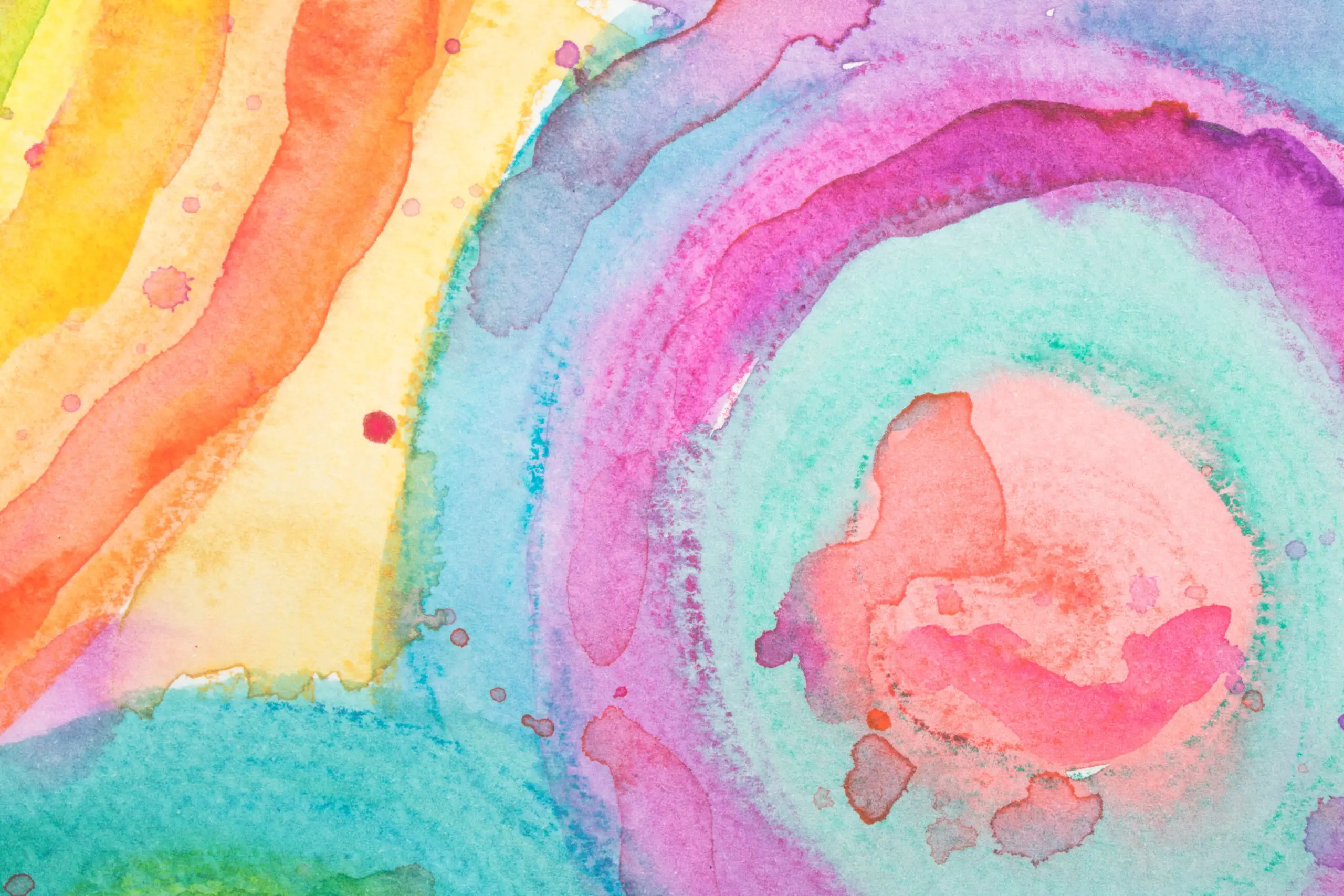Paints and inks are two distinctive mediums with many uses. However, there can be confusion, conflicts, and overlapping areas between these two mediums. So you might wonder what is the difference between paints and ink.
The main difference between paints and inks is ink is very flowy and thin while paints are viscose and thick. Ink has very fine pigments or dye with small molecules, making them dissolve in ink solvents very well. Paints have larger pigments and thick binders to hold them together
Knowing the properties and differences of the mediums you use well, allows you to use them with confidence the next time. So I did a little research on the internet and found some interesting factors to compare between paint and inks.
What is the difference between paint and ink?
Ink is considered a liquid, gel, or paste that has a dye or a pigment dissolved in it. Inks are often used when writing, drawing, and printing. Inks are still very popular among calligraphy artists who use fountain pens to draw ink and write on paper.
Paint on the other hand usually refers to a liquid or liquifiable medium. When applied it is in a liquid form but after drying it becomes solid. Paint is my favorite art medium. I like how paint adds color to your creation and makes it interesting at the same time. But I should get more into ink art, maybe starting from calligraphy.
The experience I have inks is with printing inks. They are so liquid but can stain anywhere so quickly because they are highly pigmented. Inks are not a diluted version of paints if you are confused with that. These are only general terms and can have exceptions always.
Is ink considered paint?
Some artists use inks as paint with a watercolor brush on paper. They use inks of black color paint and create greyscale paintings on paper by mixing them with water. So you can call ink paint if you are using it like watercolor paints.
Other than that paint and inks are very different mediums. Although you can make paint-like ink and use them as convenient to you. I have written a whole article about watercolor and acrylic paint, comparing them both. You will see my experiment with watercolors there.
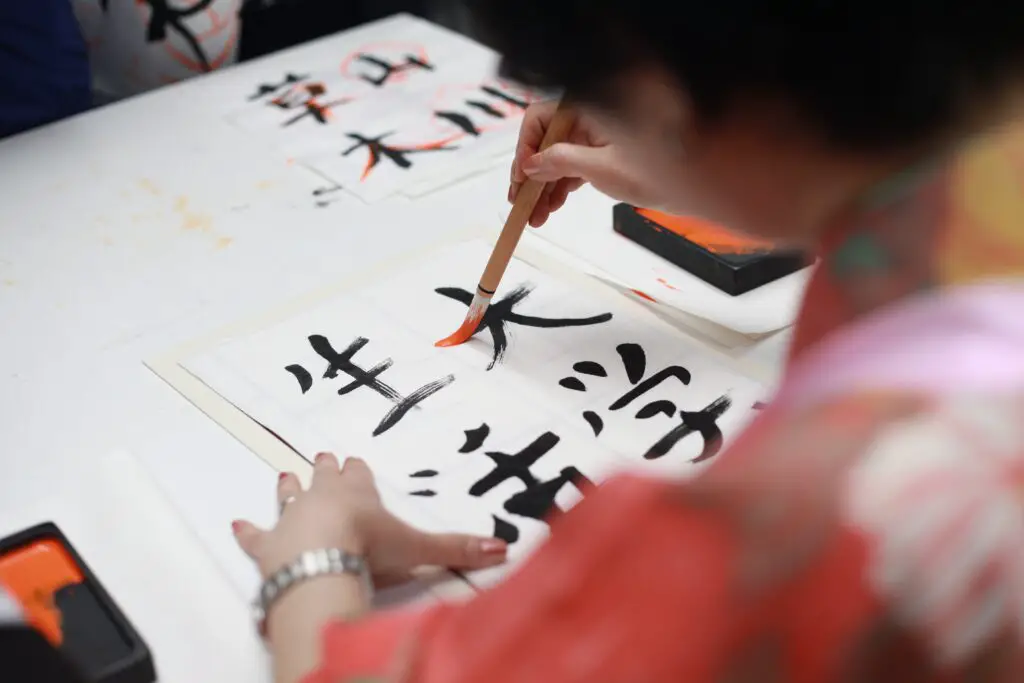
Can paint be used as ink?
Paint can be used as ink especially if we use a medium to increase the flow of paint. If you want to increase the flow of acrylic paint and use it as the ink you can mix acrylic paint with a flow aid. Because one of the main properties of ink is its ability to flow freely. This way you can use paint as thinly and pigmented as ink.
But if you just dilute any paint with a medium, it reduces the color intensity also. But flow aid does this better because it does not thin down the paint too much, but increases the flow. The binder and the solvent used in inks are not thick, but very thin and flowy. That’s how ink is thin without losing the intensity.
Comparison of different aspects of paints and inks
Comparing the properties and aspects of paints and ink is the best way to know their difference in depth and build a true understanding of the art mediums.
Application
When applied onto a surface, the ink will permanently change the color of that surface. Also as ink is very watery you might think it will bleed when used on paper. But it is not true. Ink can hold on to the place that it has been put without bleeding. This makes ink a perfect choice for calligraphy using pens.
Paint on the other hand has a very smooth application. The paint will not be bled because of its thick consistency. It can hold its shape and hold on to the place it was put on very well. It makes it easier to create clean lines and artwork in a painting. Paint is usually used with a brush.
Composition
Both ink and paints use a binder, vehicle, colorant, and other additives. Paints can also contain fillers to extend colors usually in cheaper paints. However, the type of material used as a binder, vehicle, and colorant can differ between paint and ink.
Other than the above-mentioned components, Ink also has solvents to dissolve, resins to bind, solubilizers to keep the mix soluble, lubricants for smooth application, and surfactants to improve the paint flow, fluorescents for some inks, etc.
Inks use both pigments and dyes as the colorant. But paint usually uses pigment as the colorant. In paint, pigments are dispersed in the medium and after drying, pigments are trapped inside the binder.
Some of the common binders used in paints are alkyds, acrylics, vinyl, polyurethanes, polyesters, epoxy, or oils. Inks use binders like shellac. It is a natural resin or a binder that use to hold pigments together.
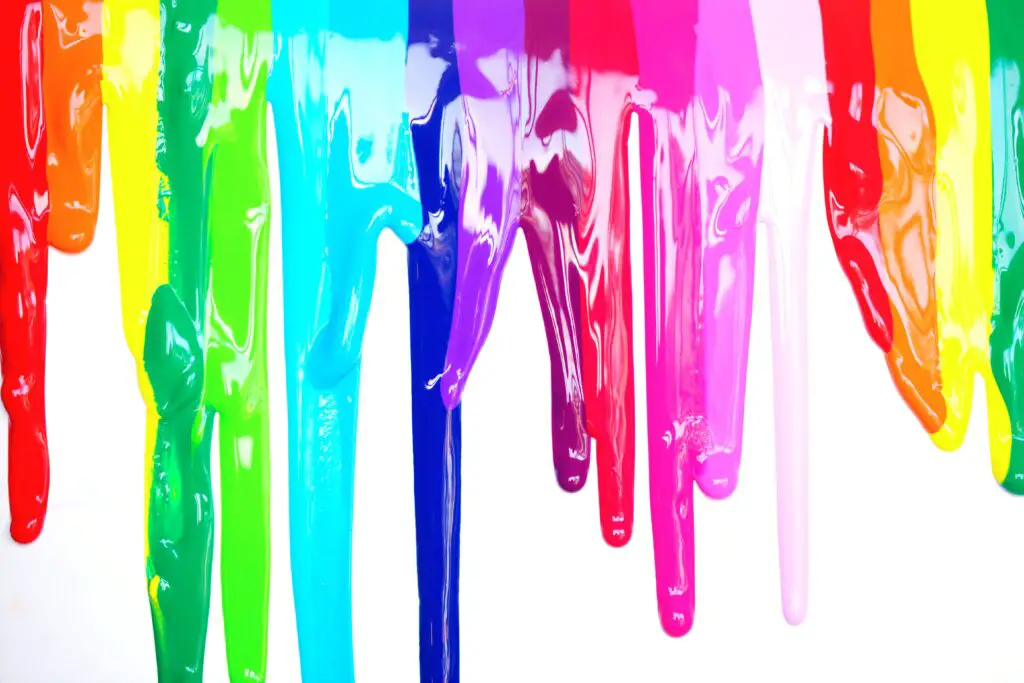
Most artists I have talked to think that inks do not have a binder and it is just a dye or pigment dissolved in a solvent. This is not true. Inks use binders like acrylic, and gum arabic some inks use shellac, and some use walnut. It all depends on the type of ink.
One alcohol ink artist I have talked to said that “alcohol inks don’t have a binder. The alcohol is a mild corrosive that eats away at the protective layers and stains the surfaces. That’s why some inks need to be sealed”.
Consistency
Inks usually have a thin consistency while paint has a thicker consistency. Ink also flows better than paints. Inks usually absorb or soak into a porous surface better than paints and become harder to remove. Inks are not always fluid. It can be in a solid form like a paste as with printing inks.
In some cases, you will not need this soaking effect of ink like with alcohol inks. In this case, you can use rigid nonporous surfaces like tile, ceramic, glass, plastic, and metal.
Paints usually have a thicker, sticky consistency. Most of us distinguish paint and ink with this consistency difference. But ink is not thick, or sticky, but it’s like a liquid with high intensity of color that can stain the surface it comes in contact with.
Colors
Pigment or a dye is what gives color to paint or ink. Pigments are larger particles while dyes are made from very smaller molecules. Therefore it is harder to disperse pigments in paint or an ink solution without the help of a binder.
Binders help to keep the pigments dispersed throughout the paint uniformly. As dyes have very smaller molecules, they are very soluble in solvents used in inks like water, oil, and alcohol.
Color intensity is very high with inks. They are not transparent at all. But paints with pigments can be transparent and less intense at some times, usually if the paint did not have enough pigment concentration. However high-quality paints have a load of pigments and have very good intensity.
Dye inks have the highest color intensity when compared to pigmented inks. Dye-based inks also have a wider color range.
You might think that watercolors are just like ink. Watercolor has very fine pigments in it. The purpose of watercolors is to create very thin transparent layers of paint. But inks are very opaque, highly pigmented, and have high color intensity. Therefore inks are not a good choice for watercolor painting. But you can get good results if you dilute inks very much.
Uses
Inks can be used to create not only texts but also images, designs, drawings, and most importantly for printing. Ink can be used with a pen, brush, or with quill as in history.
Paint on the other hand is not commonly used for writing but use to add color to the artwork. Brushes, rollers, or sponges can be used with paints.
The uses of both paints and inks are interchangeable. One can use inks as paints when used as watercolors. Paints can also be used as inks for calligraphy using watercolor and gouache as mediums.
Inks are used in tattoos, printers, and arts with special effects like alcohol ink art. Also, they are used in resin art to tint the resin and to color certain areas. You can find ink in many places from edible ink on cakes to ink in the ballpoint pen you write from.
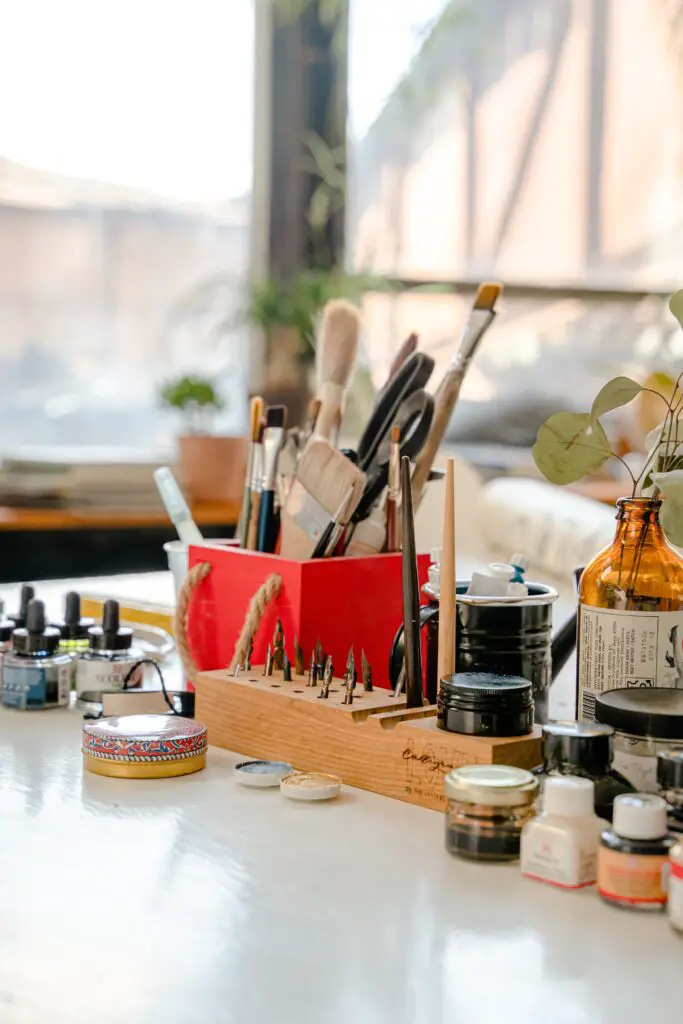
Paints like acrylic paints are very versatile mediums that can be used on almost any surface. Both oil and acrylic paints are used to create fine art paintings, the kind you see in art galleries and museums. Paints like guache if used to create illustrations and art.
Watercolors are also a popular art medium that creates very unique and distinct effect compared to other art mediums. Other than artsy paints, there are paints used for home improvements like wall paint, floor paint, furniture paint, etc.
Surfaces used on
Paint like acrylic and oil paints are used on canvases. Canvases can hold bulky paints like oil and acrylic. They do not get absorbed into the canvas as the canvas is primed with gesso, which is like a coating between the canvas and paint. So paint sit on top of the canvas. But still, paint can grab onto gesso well.
Paints like watercolors and gouache are used on thick paper like watercolor paper. These papers have a high density to hold bulky paint and prevent the warping of the paper.
However, inks are very lightweight and they flow freely. Inks tend to absorb into a porous surface like paper. However, inks do not need very high-density paper as they are not very bulky. You can use a paper that is a bit denser than plain paper for inks, especially for calligraphy. It will not stain the back of the paper.
Also, you will notice that paint always changes the texture of a surface. Which means you can feel the paint on a surface. Ink is very thin, lightweight, and only soaks the porous surfaces. So you will not see any texture change on the surface with inks but rather a very intense color change.
If you are interested to know more about acrylic paint, you can read my article ‘17 Pros and cons of acrylic paint: All you need to know‘. You will find everything you need to know about acrylic paints.
Permanence
The permanence of an art medium can be judged by the ability of the medium not to change over time with exposure to sunlight, air, and the environment. You can also judge the permanence of a medium by lightfastness. Quality paint can withstand exposure to sunlight over time.
Ink colors are lightfast depending on the pigments or dyes used in them. Usually when dyes are used the permanence say to be lower. the color can fade away with time. But when pigments are used in inks the permanence is high and the colors will not fade away over time.
Think of a time you printed something with an inject printer. The print will lose color and start to bleed as soon as the water is contacted with it. Therefore most dye-based inks are not permanent.
When considering paints, the higher the quality of the paint the permanence will also be higher. As an example, high-quality acrylic paints have high permanence and will not fade away for a long time.
Other than talking about the long-term permanence of ink, let’s see the short-term permanence of ink using dye. Dye is a pretty permanent thing that can soak into the porous material it is used on. After the dye is absorbed into the surface it is almost impossible to remove it.
This is the same for paints that form bonds with a surface like oil and acrylic paints. It will be almost impossible to remove these paints after fully curing.
Drying time
Paints can take a long time to dry. It can take from a few seconds to even days or weeks to dry for water-based paints. It can take up to months to years for oil-based paints. Paint is said to be cured after all the water is evaporated from the paint.
In general, inks dry faster than paints. Think about an inkjet printer. The ink is dry as soon as the printed paper comes out of the printer. This is the same for most ballpoint pens as well. However, there are always exceptions. Some links can take a long time to dry compared to others.
Some paints are waterproof after fully drying like acrylic and oil paints. Some are water-soluble even after fully drying like watercolors and gouache.
Dye-based inks like alcohol inks can be reactivated with alcohol even after drying. Inks are not a very permanent thing. So you can protect the ink by varnishing it. It will set up a barrier between the surface and the environment, protecting the ink.
Price
In general, inks are more expensive than paints. However, the prices are quite similar for good quality paint and inks.
The price is low for dye-based inks compared to pigment-based inks. At the same time, dye-based inks are not water-resistant. A single drop of water on the dye ink can ruin the artwork. Especially in the case of inkjet printers. I have ruined many prints this way. But the more expensive pigment-based inks have less color intensity, but, are more resistant to water.
Different types of inks and paints
I thought you will be interested to know the different types of inks and paints available. Below I have included a short insight into each paint and ink as well.
Inks
Pen ink: Pen inks can be either water-based or oil-based. It is used in ballpoint pens, fountain pens, dip pens, rollerball pens, and gel pens. You can find oil-based ink in ballpoint pens and the rest have water-based ink.
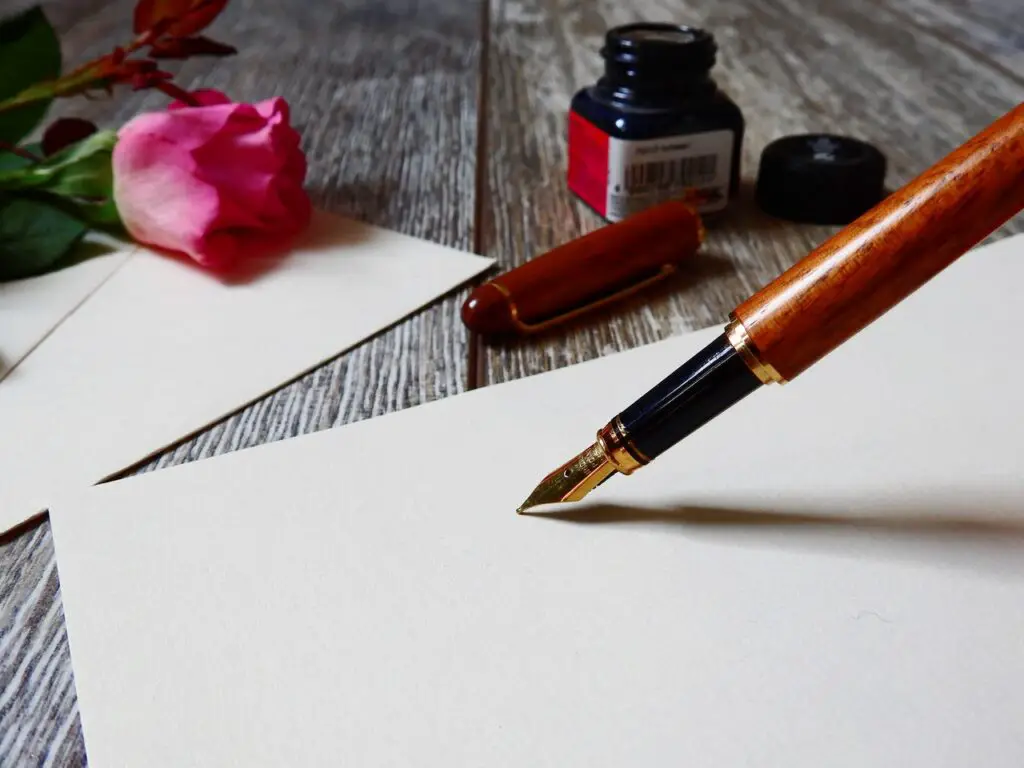
Acrylic inks: A fluid version of acrylic paint. It is a combination of pigments and a liquid acrylic polymer binder. Available in bright and intense colors. Expensive. Waterproof after drying.
Alcohol ink: Dye-based ink. Can be reactivated with alcohol even after drying.
Tattoo ink: These inks are permanent on the body but recently made tattoo inks claim to be easy to remove.
Printer ink: Printer inks are nonpermanent on paper especially inject printer inks. When contacted with water the paint easily smears. But pigment printer inks tend to be more permanent.
Fabric ink: Create seamless designs on fabric. As fabric ink is thin it feels like a part of the fabric rather than fabric paint that sits on top of the fabric. It makes permanent ink on the fabric.
Paints
Acrylic paint: Artist paint that is water-based and non-toxic and easy to use. Generally used on canvas but can stick to almost any surface. Permanent after fully drying. Watersoluble.
Oil paint: Oil-based artists’ paint used in the past and present. Can be toxic and harder to use. Waterproof after drying. Known for the long drying times. Need a solvent to dissolve.
Gouache: Watersoluble and can be reactivated with water after drying. Used to create illustrations and artworks. After creating the artwork it is usually scanned and reproduced.
Watercolor: Use to produce unique transparent layers of paint that are not possible to achieve with any other paint. Made from very fine pigments dispersed in a medium. Can be reactivated with water after drying. Used on watercolor paper with high density.
Tempera and poster paint: Paints used by students for their school art projects. Nonpermanent paint. Can fade away with time. Can be reactivated with water.
Latex paint: Water-soluble wall paint. Best for indoor surfaces unless formulated especially for outdoor surfaces. Also used in some art techniques latex paint is less expensive than artist paints.
Conclusion
Ink and paints are very different mediums. Most importantly they have distinct uses. You can see ink in every ware from the books you read to print on your t-shirt. Ink uses very fine pigments or dyes in it while paint has pigments with large particles in it. No matter what you use both of these mediums for always remember to use good quality inks and paint for better results.
You can find all your artistic needs from ink to paints at Blick Art Materials. They have a wide variety of products of good quality. Also, you will find the best deals there.

